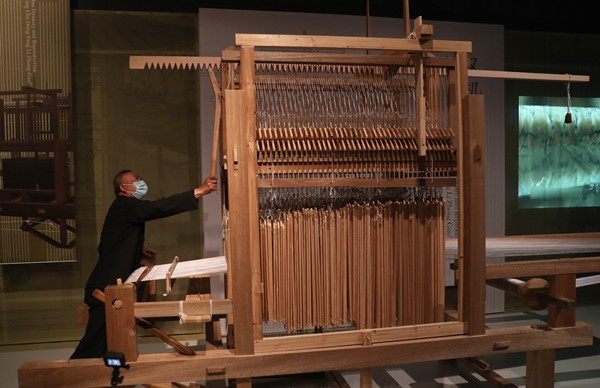The magic of conservation
 0 Comment(s)
0 Comment(s) Print
Print E-mail China Daily, May 27, 2021
E-mail China Daily, May 27, 2021

An exhibited silk robe decorated with a dragon and Buddhist patterns was once the outer layer of a shroud worn by the Empress Dowager Cixi-the most powerful de facto ruler in the late Qing Dynasty (1644-1911) who was buried in 1909.
It is the only surviving artifact of its type throughout ancient China for the empress dowager broke traditional etiquette to use as many dragons and the Chinese characters for "Buddha "as possible on the robe.
But over the course of the following century, its condition deteriorated and by the time it was presented to the conservators at the China National Silk Museum, it was in urgent need of restoration. They had to look for matching modern textiles and use traditional sewing methods to attach them to the robe, according to Zhou.
Whether it's the painted wallpaper at the former imperial palace of the Forbidden City in Beijing, or a Han Dynasty (206 BC-AD 220) loom recovered in Sichuan province, conservation will greatly benefit the study of traditional craftsmanship.
With the restored loom, for instance, researchers may have a chance to remake the most complicated type of Han Dynasty tapestry, the techniques of which, to this day, remain somewhat of a mystery.






Go to Forum >>0 Comment(s)